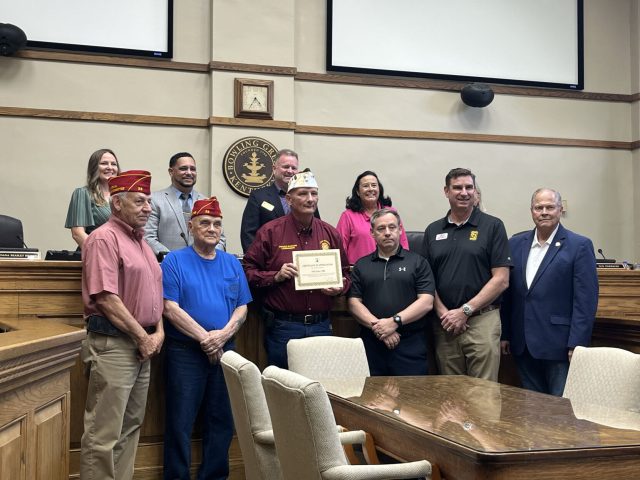Kentucky Afield Outdoors: Native grasslands best places to hunt rabbits
Published 12:00 am Tuesday, January 26, 2010
With most other hunting seasons over, many hunters turn to small game at this time of year. Kentucky’s rabbit and quail populations have both declined due to large-scale changes in agriculture. Fescue replaced native grasses, and clean fence lines replaced the shrubby rows small game need.
However, rabbits are more adaptable than quail and their numbers haven’t fallen nearly as much. Hunters should be able to find them if they can locate the right habitat.
Trending
“A well-managed native grassland – or even a poorly managed native grassland – can hold large numbers of rabbits,” said John Morgan, small game program coordinator for the Kentucky Department of Fish and Wildlife Resources. “If you can find a farm that has implemented Conservation Reserve Program (CRP) practices, that would be an excellent place to hunt. The more brushy areas, the better. Shooting may be more of a challenge, but it’s a good opportunity to jump rabbits.”
The CRP provides financial assistance to farmers to improve wildlife habitat, such as converting fescue fields to native grasslands. It is one of several cost-share programs Kentucky Fish and Wildlife offers private landowners. Morgan said habitat initiatives on both public and private lands are almost guaranteed to succeed when it comes to rabbits. Department efforts aimed at increasing quail populations throughout the state benefit rabbits as well.
Peabody Wildlife Management Area (WMA) in Ohio, Hopkins and Muhlenberg counties is a good choice for those who want to try rabbit hunting on public land. The WMA offers more than 45,000 acres and is open under statewide regulations for rabbit hunting. Hunters must purchase a $15 Peabody hunting permit, available wherever licenses are sold, in addition to a hunting license.
“It’s the largest, most expansive grassland complex in the state,” Morgan said. “Public land gets extensive hunting pressure. A place like Peabody can take that pressure.”
The recent snowfall offers hunters without dogs a unique opportunity to track rabbits. While a beagle can track a rabbit by scent, snow allows hunters to track by sight.
“You can use people to replace beagles,” Morgan said. “Find a fresh rabbit track, and follow it until a rabbit hops by.”
Trending
Though rabbit numbers are on a long-term decline, surveys show a short-term increase in populations this year. Rural mail carriers help Kentucky Fish and Wildlife monitor small game numbers, and their sightings indicate rabbit numbers are up from last year.
Hunters can also help with these counts. You can download and print your own small game hunter log online at www.fw.ky.gov/smallgamelogs.asp. At the end of the season, turn in your survey to receive a free hat and annual report.
For more information on habitat improvement programs such as CRP, call Kentucky Fish and Wildlife at 1-800-858-1549 and ask for the name of the private lands biologist serving your area. You can also find your private lands biologist online at the department’s website, fw.ky.gov. Search under the term, “Wildlife Private Lands Biologists.” The biologist can help you choose the most appropriate program for your land, apply for assistance and implement improvements.
Rabbit hunting requires either an annual or short-term Kentucky hunting license for hunters ages 12 and over. Hunters ages 12-15 can purchase a youth hunting license at a reduced price. For complete small game hunting regulations, pick up a copy of the 2009-10 Kentucky Hunting & Trapping Guide, available online at fw.ky.gov and wherever licenses are sold.
Author Hayley Lynch is an award-winning writer and associate editor for Kentucky Afield magazine, the official publication of the Kentucky Department of Fish and Wildlife Resources. She loves deer hunting, shotgun sports and introducing women to the outdoors.
The Kentucky Department of Fish and Wildlife Resources manages, regulates, enforces and promotes responsible use of all fish and wildlife species, their habitats, public wildlife areas and waterways for the benefit of those resources and for public enjoyment. Kentucky Fish and Wildlife is an agency of the Tourism, Arts and Heritage Cabinet. For more information on the department, visit our web site at fw.ky.gov.






